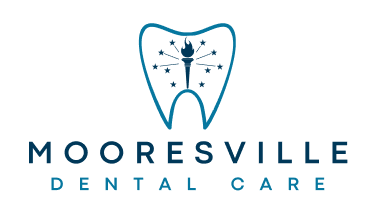Oral cancer is divided into two categories – those occurring in the oral cavity (your lips, the inside of your lips and cheeks, teeth, gums, the front two-thirds of your tongue and the floor and roof of your mouth) and those occurring in the oropharynx (middle region of the throat, including the tonsils and base of the tongue).
Early detection may result in better treatment outcomes and help keep you or someone you love from becoming one of the 11,230 people whose lives may be claimed this year by the disease. The 5-year survival rate of those diagnosed is approximately 60 percent.
Where Can Oral Cancer Appear?
The oral Fincludes your lips, cheek lining, gums, the front part of your tongue, the floor of the mouth beneath the tongue and the hard palate that makes up the roof of your mouth. The throat (pharynx) starts at the soft part of the roof of your mouth and continues back into your throat. It includes the back section of your tongue, as well as the base where the tongue attaches to the floor of your mouth.
What Are the Symptoms of Oral Cancer?
It’s important to be aware of the following signs and symptoms and to see your dentist if they do not disappear after two weeks.
- A sore or irritation that doesn’t go away
- Red or white patches
- Pain, tenderness or numbness in mouth or lips
- A lump, thickening, rough spot, crust or small eroded area
- Difficulty chewing, swallowing, speaking or moving your tongue or jaw
- A change in the way your teeth fit together when you close your mouth
Some people complain of a sore throat, feeling like something is caught in their throat, numbness, hoarseness or a change in voice. If you have any of these symptoms, let your dentist know, especially if you’ve had them for two weeks or more.
What Are the Risk Factors for Oral Cancer?
Research has identified a number of factors that increase the risk of developing oral cancers. Men are twice more likely to get oral cancer than women. Smokers and excessive alcohol drinkers older than 50 are the most at-risk.
The human papilloma virus (HPV), which is sexually transmitted, has also been associated with throat cancers at the back of the mouth. HPV-positive head and neck cancers are related to the rise in throat cancers in non-smoking adults. HPV-positive head and neck cancers typically develop in the throat at the base of the tongue and in the folds of the tonsils making them difficult to detect. Although people with HPV-positive cancers have a lower risk of dying or having recurrence than those with HPV-negative cancers, early diagnosis is associated with the best outcomes. Regular dental check-ups that include an examination of the entire head and neck can be vital in detecting cancer early.
How Can My Dentist Help Detect Oral Cancer Early?
During your regular exam, your dentist will ask you about changes in your medical history and whether you’ve been having any new or unusual symptoms.
Then, your dentist will check your oral cavity. This includes your lips, cheek lining, gums, the front part of your tongue, the floor of your mouth and the roof of your mouth. Your dentist will also examine your throat (pharynx) at the soft part at the roof of your mouth, including your tonsils, the back section of your tongue and where your tongue attaches to the bottom of your mouth. The dentist will then feel your jaw and neck for any lumps or abnormalities.
What Happens If My Dentist Finds Something Suspicious?
Stay calm. Your dentist won’t be able to tell right away if what he or she is looking at is cancerous, so he or she may refer you for testing. Your dentist might also reexamine you a week or two later to see if questionable spots are healing on their own before recommending additional follow-up. Together, you and your dentist can create the best strategy for diagnosis, treatment and prevention.
What Can I Do to Prevent Oral Cancer?
The most important thing is to be aware of your risk factors. Men are twice more likely to get oral cancer as they get older. If you smoke, drink excessive amounts of alcohol or have a poor diet, changing these habits can decrease the chances of developing oral cancer.
Certain strains of HPV can also put you at risk. The CDC recommends that 11- to 12-year-old boys and girls get two doses of HPV vaccine to prevent cervical and other less common genital cancers. It is possible that the HPV vaccine might also prevent head and neck cancers – since the vaccine prevents an initial infection with HPV types that can cause head and neck cancers – but the studies currently underway do not yet have sufficient data to say whether the HPV vaccine will prevent these cancers. Routine vaccination can be started as early as 9 years of age, according to the CDC.
If you have had oral cancer before, you may be more likely to develop it again so keep up those regular visits.

 Review Us
Review Us  Review Us
Review Us